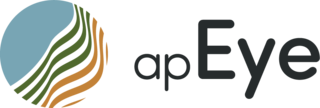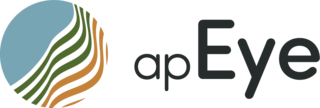Precision diagnostics in seconds
If you depend on having an artificial eye, apEye now opens up new options for you in terms of lightning-fast diagnostics, painless fittings and a significant reduction in overall waiting time. At present this varies from one hospital or clinic to another. Our aim is to reduce the duration to only a few hours. apEye will thus fundamentally revolutionise the treatment – always with the patients’ well-being in mind.
This is how it works
In order to obtain a perfectly-fitting artificial eye, three important steps are necessary:
The revolution in artificial eyes
ApEye makes it significantly easier and more convenient to achieve the perfect outcome for the patient. For example, the painful process of making an imprint of the eye socket is now a thing of the past – as is the waiting time of more than six months. Today, depending on the hospital or clinic, it only takes a few weeks for the patient to receive their new ocular prosthetic.
Together, the colour fidelity of the eye scan and the new possibilities offered by 3D printing ensure a result that can hardly be distinguished from a healthy eye. Here, the natural topography of the iris is reproduced perfectly and the eye’s reflections are recreated even more realistically.
apEye is the result of years of research by numerous research teams who have pooled their collective expertise in ocular diagnostics and prosthetics, medicine and 3D printing. Find out more about the TOMEY CASIA2 and OCUPEYE here and onsult your doctor or ocularist about apEye.
Frequently asked questions
New, modern solutions bring many benefits – as does apEye. At the same time, they raise many questions among patients, their families and their friends. Here you will find answers to frequently asked questions. If anything remains unclear, please ask us directly or consult the doctor/ocularist treating you.
What does a 3D-printed prosthetic feel like?
The apEye prosthetic is perfectly matched to your eye socket and is an ideal fit. The razor-sharp scan image and 3D printing are essential prerequisites for the perfect fit. The doctor or ocularist treating you will then complete the individual fitting of apEye with you. There is therefore no noticeable difference compared to conventional ocular prosthetics. Apart, of course, from the fact that the process of obtaining the finished apEye is painless and faster.
Will I find the process of producing the prosthetic painful?
No. Thanks to apEye, the methods previously used for obtaining an eye impression are a thing of the past. The scan by means of the CASIA2 takes only a few seconds per eye and is completely painless. This is followed by production of the 3D print and the fitting by the ocularist. The aim of apEye is to speed up the process and also to make it more pleasant for the patient. Particularly for young adults or people who are being fitted with an artificial eye for the first time, this means we can reduce their fear of the treatment.
Is the treatment using the CASIA2 scan safe?
Yes, the light source of the CASIA2 was developed specifically for use on the eyes and has a wavelength that is absorbed by the water in the healthy eye. The light intensity applied to the retina is therefore one that is absolutely harmless. This has also been confirmed by the medical tests carried out at the world-famous Moorfields Eye Hospital in London.
Do I then have to wear apEye all the time?
No. If you wish, you can have a second ocular prosthetic made for wearing at night – or while you’re cleaning your apEye. In short, with apEye you can have an all-in-one solution specifically suited to your needs. Just ask your ocularist about it.
How do I clean the eye?
The ocularist or doctor treating you can advise you on the correct way to clean your ocular prosthetic. If you already have an artificial eye, you can continue to use your existing cleaning routine.
Do I have to administer eye drops to the eye?
Your doctor or ocularist will advise you. Basically, it depends on the patient whether the apEye has to be treated with eye drops. In many patients, even after an eye has been removed, the function of tear production continues unaffected. In such cases, eye drops are not or are only seldom necessary.
Can the artificial eye move like a healthy eye?
Eye movement varies from patient to patient and depends on how much muscle is left after the eye has been removed.
Will people notice that I have an artificial eye?
There are several factors involved here. Among them is the question as to how much of the eyelid or the remaining eye is left. The apEye has no influence on this. However, thanks to the sophisticated technology in the CASIA2, it is possible to produce a perfect likeness of the healthy eye as a template for the apEye. This means that the healthy eye and the artificial eye are almost completely identical in terms of colour and iris topography.
How easily can the apEye be damaged?
Unlike conventional glass eyes or those produced in other ways, the apEye is unbreakable. If you drop it while cleaning it, for example, it is unlikely that it will be damaged. It should be cleaned again before being inserted, however.
I already had an artificial eye. What will change for me with apEye?
For one thing, the process is painless if the ocularist uses a moulding procedure – because no impression of the eye socket is needed for that. Instead, the eye socket and the healthy eye are scanned in a contact-free process lasting only a few seconds. From the appointment with the doctor or ocularist to the printing and production of the finished apEye, it takes only a few days to a few weeks, depending on the hospital or clinic – and our aim is to shorten the process to just a few hours.
What criteria do I have to meet to be able to use apEye?
apEye is suitable for patients aged 18 and over. Studies have shown that 8 out of 10 patients are eligible for the treatment. This depends primarily on the depth of the eye socket. A scan with the CASIA2 will reveal whether the criteria are met.








